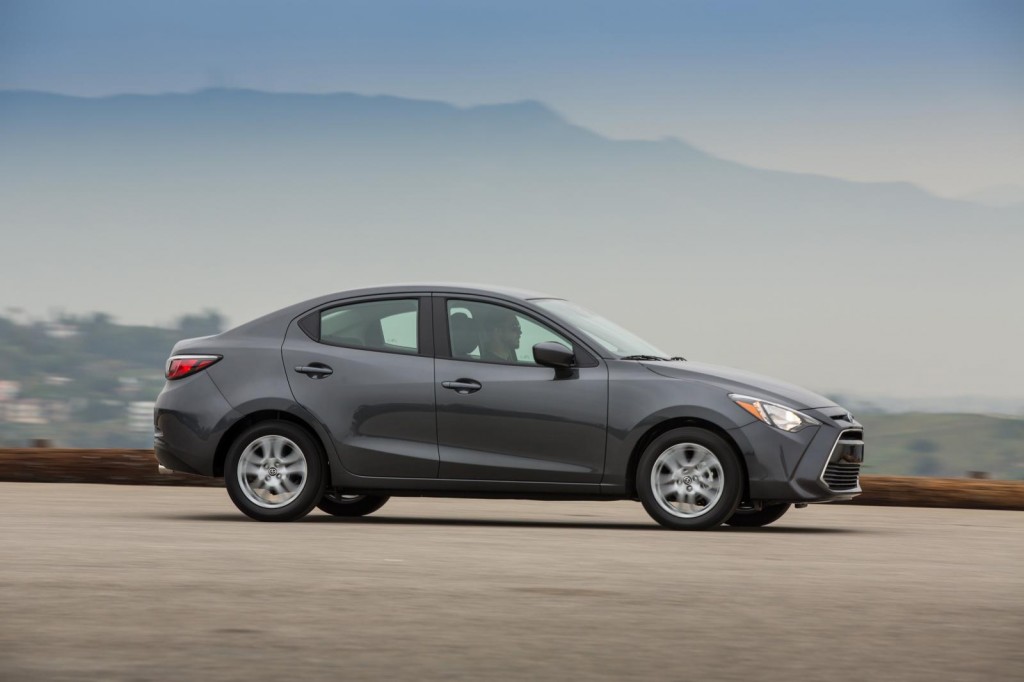New Scion Models Reflect Demographic Fine-TuningNew Scion Models Reflect Demographic Fine-Tuning
Group Vice President Doug Murtha says buyer demographics for the iA sedan and iM hatchback basically are the same as those for any car in the Scion lineup: people who want a high-mileage, affordable new small car that isn’t bare-bones.

CHICAGO – Two down, one to go.
Scion, having said it will add three new vehicles over the next two years, unveils the iA sedan and iM hatchback for 2016 at the recent New York Auto Show.
The third new entry is still to come, but a Scion executive dismisses speculation it will be a CUV. The Toyota brand doesn’t offer one, leaving it out of the industry’s fastest-growing segment.
“There’s been lots of speculation, but I’m not saying if it’s a CUV,” Doug Murtha, group vice president-Scion, tells WardsAuto. “You won’t have to wait too long to find out. You’ll know the type of vehicle planned in the second half of this year,” he says without revealing when or where the announcement will be made.
Murtha was interviewed in Chicago for an event Scion sponsors call Motivatour, which connects Millennials with budding business startups with thought leaders in business, technology, fashion and branding to help those entrepreneurs improve their business skills.
Industry observers say CUVs and SUVs are rising in popularity largely because they offer all-wheel-drive for all-season motoring security, a feature absent from most cars.
“We aren’t going to turn our nose up on a CUV. I hope to have more AWD vehicles in our lineup,” Murtha says. “We have none now, but I wouldn’t rule it out. All options are open.”
As for the upcoming ’16 iA and iM, Murtha says sales targets are 20,000 iM hatchbacks and 30,000 to 40,000 iA sedans annually. “We have some flexibility with those numbers, but they are in the ballpark,” he says.
Scion started selling cars in the U.S. in 2003. Sales peaked at 173,000 units in 2006. But the youth-oriented brand only sold 58,000 vehicles in 2014, down from about 70,000 in 2013. With added sales of 50,000 to 60,000 iA and iM units, Scion likely would again top 100,000 in the U.S., a level considered necessary to remain viable in the market but not achieved by the brand since 2008, when it delivered about 118,000 vehicles in the U.S.
“We still might be a little light of the 100,000-unit mark with the iA and iM initially, because production of the Scion iQ has ended,” Murtha says. “But when the third new vehicle is added, that should ensure 100,000 sales annually.”
Some supplies of the tiny Scion iQ still are in dealer inventory, “but we should be sold out in a few months,” Murtha says, deflecting criticism it is too small and low-powered for the U.S. market.
“It wasn’t a mistake. I have no regrets,” the executive says. “It allowed us to roll the dice and see what would happen. It had 11 airbags and had a safety story, but we found that consumers aren’t comfortable in such really small cars.”
Spending Green Curtails Going Green
Murtha won’t say if any other current Scion models will be phased out to make room for the trio of new entries over the next two years, or whether more new models are being planned. “We will be able to expand our contract or lineup if necessary.”
Murtha downplays the suggestion an all-electric, plug-in hybrid or hybrid eventually might join the Scion lineup.
“The new iA sedan will get 42 mpg (5.6 L/100 km) highway, the iM 37 mpg (6.4 L/100 km) highway,” he says, noting those models’ fuel efficiency is as good as, if not better than, that of many higher-priced alternative-fuel vehicles.
“We surveyed our owners and they said they loved electrics and loved plug-ins and loved hybrids and loved conserving fuel and loved being green,” Murtha says. “So then we asked, ‘How much more are you willing to pay for these vehicles?’ and they replied, ‘Zero.’ The one thing they didn't love about alternative-fuel vehicles was the higher price.”
Buyer demographics for the iA and iM basically are the same as those for any car in the Scion lineup: people who want a high-mileage, affordable new small car that isn’t bare-bones.
“It’s not that the $16,000 iA is going to be a luxury car,” Murtha says. “But we’ve included more features in the base price, like 16-in. alloy wheels and push-button start.”
The new models reflect adjustments in Scion’s approach to its target audience, he says.
“We’re still targeting 18- to 34-year-old singles and couples, but since we started selling cars in 2003, 70% of those 18- to 34-year-olds are different from what they once were,” Murtha says. “These people have been affected by the (unstable) economy and have a different mindset. They are more pragmatic and less willing to accept quirky. They aren't high-income, but they can afford to buy a new car.
“They’ll look at a Toyota Corolla, but don’t want to buy a car that 300,000 other people have bought. They want to be different.”
Scion has chosen to be different, too. Initially the brand wanted nothing to do with sedans, yet the ’16 iA is Scion’s first traditional 4-door sedan with an enclosed trunk unlike its hatchback stablemates.
“The term hatchback became popular because youth didn’t want to use the term sedan,” Murtha says. “They wanted to be cool, and hatchback coupes were cool but sedans were stodgy. But that’s all changed because in the last few years there have been lots of sporty, compelling sedans in the market without sacrificing fun or function.”
About the Author
You May Also Like